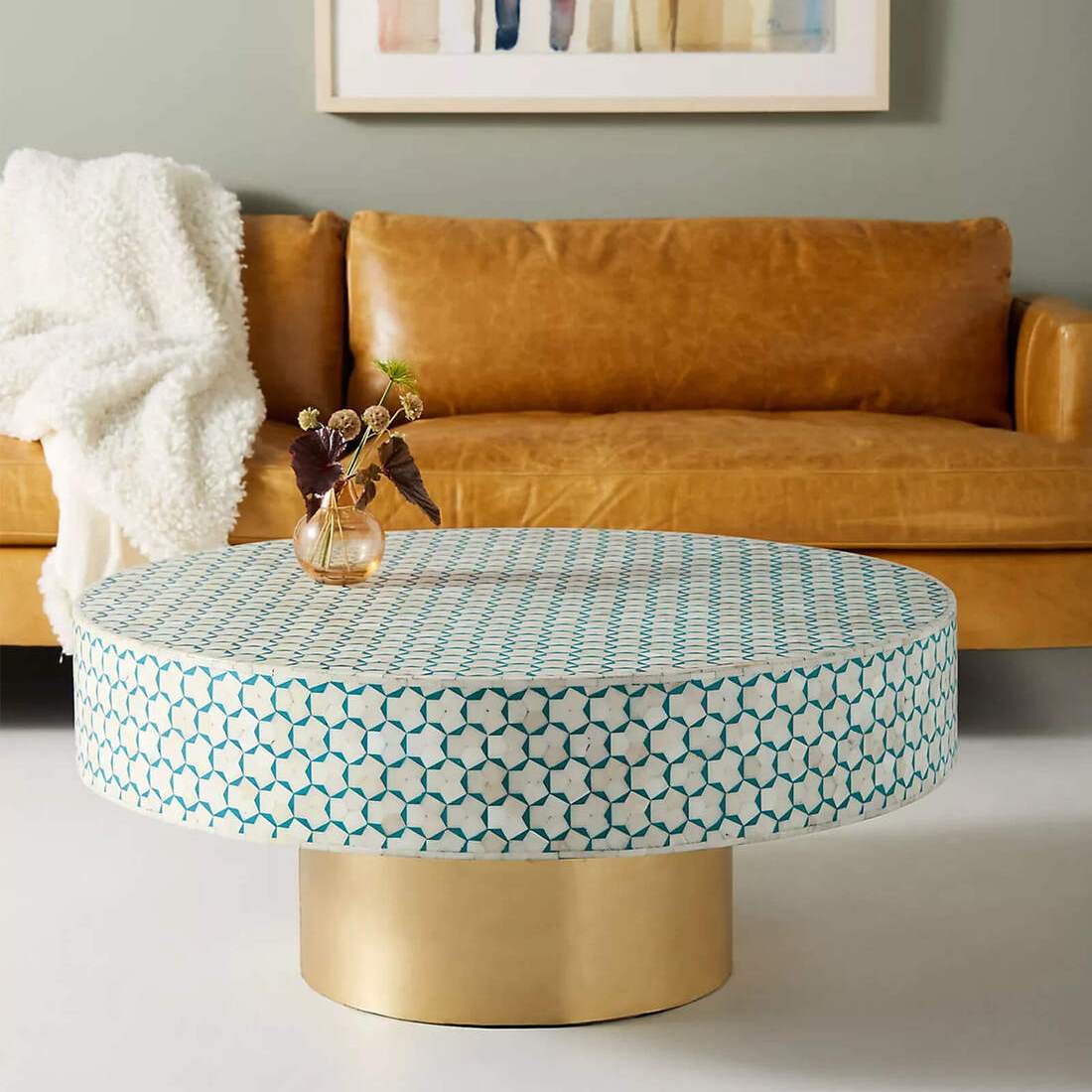In the world of interior décor, upcycling has emerged as a sustainable and creative approach to giving old furniture a new life. One of the most captivating transformations involves faux bone inlay designs, which bring a touch of luxury and heritage to otherwise ordinary pieces. Whether you’re an experienced DIY enthusiast or a beginner looking for a fulfilling project, revamping nesting tables with a bone inlay-inspired design can elevate the aesthetic of your living space. If you’re seeking authentic craftsmanship, Bone Inlay exporter in India offers exquisite handcrafted pieces that beautifully encapsulate the essence of this time-honored artistry.
Understanding Bone Inlay and Faux Alternatives
Bone inlay is a centuries-old decorative technique, originating from the royal courts of Rajasthan, India. This intricate process involves embedding hand-carved bone or mother-of-pearl into wooden surfaces, followed by the application of resin or lacquer to create stunning patterns. Due to the complexity of craftsmanship and ethical considerations, many designers now turn to faux bone inlay techniques that mimic the look of authentic pieces using eco-friendly materials like painted stencils, polymer inlays, or vinyl overlays. This allows homeowners to achieve the same regal aesthetic without the high cost or ethical concerns associated with real bone inlay.
Why Upcycle Nesting Tables?
Nesting tables are incredibly versatile, offering functionality without occupying excessive space. Often used as side tables, coffee tables, or display surfaces, these compact tables can be stacked together or arranged separately to suit different needs. If you have an outdated or worn-out nesting table set, upcycling it with a faux bone inlay design can breathe new life into it, making it a focal point in your home décor. This project is particularly rewarding because it blends artistry, sustainability, and affordability while allowing you to customize the final look to complement your existing interior style.
Materials Needed for a Faux Bone Inlay Project
Before starting your upcycling journey, gather the necessary materials to achieve a high-quality faux bone inlay effect. Here’s what you’ll need:
- A set of nesting tables (wood or MDF works best)
- Fine-grit sandpaper
- Primer and base paint (white or pastel shades work well)
- Stencil with traditional bone inlay patterns
- Acrylic paint or chalk paint (for inlay details)
- Small paintbrushes and foam rollers
- Painter’s tape
- Sealant or polyurethane for durability
These materials are easily accessible and allow you to create a sophisticated look without requiring advanced woodworking skills.
Step-by-Step Guide to Upcycling Your Nesting Tables
Step 1: Prepare the Surface
Start by cleaning the nesting tables thoroughly to remove any dust or residue. If the tables have an old finish, use fine-grit sandpaper to smooth out the surface and create a better base for the paint. Wipe down with a damp cloth and let it dry completely.
Step 2: Apply the Base Coat
Choose a light-colored base coat to replicate the ivory or off-white tones of traditional bone inlay. Apply an even layer of primer followed by two coats of chalk or acrylic paint, ensuring full coverage. Let each coat dry completely before proceeding.
Step 3: Position the Stencil
Using painter’s tape, secure the stencil on the table surface, ensuring symmetry in the design. Traditional bone inlay patterns often feature floral motifs, vines, or geometric shapes, so opt for a design that complements your existing décor.
Step 4: Paint the Faux Inlay Pattern
Dip a small brush or foam roller into a contrasting paint color (such as black, navy, or deep green) and carefully dab over the stencil. Avoid using excessive paint to prevent bleeding under the stencil. Once done, carefully lift the stencil and let the pattern dry before repeating the process on other sections.
Step 5: Add Finishing Touches
To enhance the authenticity of the faux inlay effect, use a fine brush to add delicate details or highlight intricate lines. If desired, lightly distress the edges using sandpaper to give a vintage appeal.
Step 6: Seal for Durability
To ensure longevity, apply a clear sealant or polyurethane coat over the painted surface. This not only protects the design from wear and tear but also adds a polished finish.
Styling Ideas for Upcycled Nesting Tables
Once your faux bone inlay nesting tables are complete, the next step is integrating them into your home décor. Here are some stylish ways to showcase your transformed furniture:
- Living Room Accent: Use the tables as stylish side tables next to a sofa, adorned with decorative lamps or books.
- Bohemian Touch: Complement the design with woven rugs, textured cushions, and indoor plants for an eclectic vibe.
- Bedroom Elegance: Place one table beside your bed as a unique nightstand with a statement lamp or fresh flowers.
- Entryway Statement: Position the tables in your hallway or foyer to create an inviting first impression.
For those who appreciate fine craftsmanship and wish to explore authentic pieces, the Bone inlay Center table is a striking option that embodies the beauty of this traditional art form.
The Lasting Appeal of Bone Inlay-Inspired Décor
The charm of bone inlay designs lies in their ability to blend classic artistry with modern aesthetics. Whether you choose to upcycle furniture or invest in high-quality handcrafted pieces, the intricate patterns and rich history behind this decorative technique make it a timeless addition to any home. By embracing the upcycling movement, you not only create a unique, custom piece but also contribute to sustainable living by repurposing existing furniture instead of discarding it.
Faux bone inlay projects allow DIY enthusiasts to experiment with patterns and colors, achieving a high-end designer look without the hefty price tag. Whether you’re looking to refresh your home’s aesthetic or add a touch of global elegance, upcycled nesting tables with faux bone inlay designs are a perfect choice.

